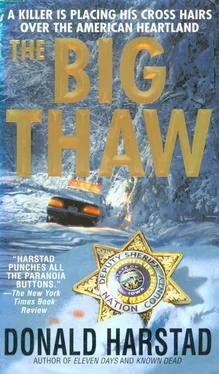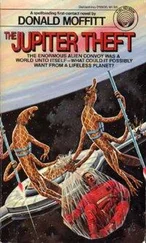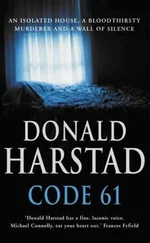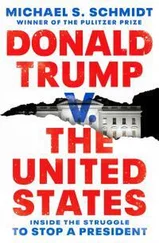"We won't probe," said Dr. Peters. "We'll do sections. The X rays have the gross angles for us…"
With that, he incised the skin in a half circle around the top of the skull, and proceeded to fold the scalp down over the victim's face. He picked up a small rotary saw, and began cutting around the circumference of the head, being very careful not to disturb the wounds. As he was beginning to cut, I peered in closer, and saw the entry wound. Small dark hole, with reddish and bluish discoloration around it. Big bruise, or, at least, it would have been. Fascinating to see one under the skin. The cracking of the skull was just barely visible. Not like a fissure or anything, just a hairline crack.
The smell of the hot bone under the saw, coupled with a fine mist rising from the work, lent sort of a surreal air to things. The whine of the saw was occasionally interrupted by a deeper tone as it encountered more pressure when Dr. Peters had to change position.
Nancy left the room. Wise move. I've never understood the derision some people heap on those who have sensibilities. I, for example, can look at blood and entrails all day without a twinge. Yet, if somebody vomits, I likely will, too. Which is the main reason I appreciated somebody having the courtesy to leave before they tossed up their lunch. But I also respected their judgment.
Dr. Peters removed the brain, and placed it on a small cutting board that rested on the victim's chest. "Let's see where this one ended up," he said, shining a light into the cranial cavity. "There! See, the dark spot right there…"
He was pointing to what looked at first like a small lump of clumpy bluish blood. If you looked really close, though, you could see it was a misshapen slug, in a glossy dollop of what appeared to be mucus. Cerebrospinal fluid, plus membrane.
"See," said Dr. Peters. "It was coming just about straight down the pipe, so to speak. Just missed the foramen magnum. Good thing, lot harder to find if it went down that road."
We stood back, while Dr. Peters used a probe to indicate the location of the slug for Shamrock, who took three photos with each camera. Dr. Peters then picked the bullet up, and used a very sharp probe to scratch an initial in the base of the round. He placed it in a bag, and initialed it, along with the date, time, place, and his name. Dr. Peters moved over the victim's chest, to the brain which rested on the cutting board. With all the commentary he was muttering into his tape recorder, and with all the sight-seeing he was helping us with, I couldn't help noticing that he was very, very gentle with the cadaver. Almost like it was capable of being injured further. He reached over to a stainless-steel tray, and picked up a large knife. Looked to me every bit like a large piece of cutlery you'd find in a kitchen. Complete with a black plastic handle.
"Where'd you get the knives?" I was just making conversation, really. Mildly curious.
"Katie's Kitchen Korner," said Dr. Peters, as he judiciously sliced into the brain. "Set of four assorted sizes. Great for this sort of thing." He laid a large portion of the brain aside. "Not nearly as much as they'd ask for the same sort of equipment in a surgical supply store. And surgical supply stores rarely have sales." He probed the tissues with gloved fingers. "Don't need a scalpel for this… it's not like we have to worry about scars or healing…"
"Oh." I was imagining a TV commercial… And, wait, there's more…
"Wonderful set," he continued. "Great place to shop."
"Sure is," said Shamrock. "I got a ten-inch frying pan and a French whisk there last month."
"The whisks that were on special, near the checkout counter?" asked Dr. Peters.
"You bet," she said. "Great for meringue…"
That got her points.
"Ah, here we are," said Dr. Peters. "The bullet's track."
He pointed at the sectioned brain, and I was very hard put to see what he was talking about. "Where?"
"Here. Tissues swell back after the passage of a projectile like this one… but see the perforation in the membrane here… and the depression in this white tissue here?"
That I did. We studied the track for a few seconds. No real reason, but it was important evidence, even though we ourselves wouldn't be testifying about it. After a few moments, Dr. Peters began hunting for the second bullet. He looked at the X rays. "Should be right about here…"
With the brain on the board, I had a difficult time maintaining my orientation between it and the holes in the skull. Not Dr. Peters.
"Here we go… fragment… and here…"
He pointed the track and fragments out to us. We "studied" them, too. While we did, Dr. Peters was slicing some very fine tissues off the brain, and preparing them for the laboratory examination that would be done.
He opened the chest and abdomen, and we continued our tour. No remarkable evidence turned up. That was good. We sure as hell weren't expecting any. Dr. Peters did complain about the pain in his hands, though. Very, very cold inside the victims. You could see little sparkles of frost underneath as he removed the liver.
The second victim was much like the first, except for the additional wound and track. We found only what we'd expected, and pending laboratory examination, there had been absolutely no surprises. Good news. But the slugs were so mangled I still couldn't definitely identify them as.22s. Then again, I'm not a ballistics guy.
At the conclusion of the autopsies, I had a brief meeting with Dr. Peters, while Nancy and Shamrock sat in the waiting room.
I had a question I just had to ask. "Doc, would either of the victims be capable of any significant movement after the shots were fired?"
"I don't think so," he said. "Although Victim Two might not have gone straight down."
"Dirk Colson," I said. "The one with two wounds."
"Right. The first one went well forward, and might not have laid him down immediately. Which may well have been the reason for the second. I would expect him to have been seated or kneeling. Didn't topple with the first shot. But both wounds came from just about the same angle, in just about the same spot. From the nature of them, not more than a second apart." He thought for a second. "The scene tells me that they weren't lying down when they were shot. The angles aren't right for that, given the clearance. And, if somebody's lying down, on a floor, for example, the shots would come in the front, back, or sides of the skull, not the top. And the one with the exit wound put the round into the wall. So, no, they were seated or kneeling, or standing. Not lying down."
"Why were you thinking they were lying down?"
"That's common in executions," said Dr. Peters. "Just as common as kneeling."
"You think that's for sure what we have here?"
"Now that I'm certain of the contact wounds, and the track… Yes. I should think so."
Wednesday, January 14, 1998, 1708
It wasn't exactly a revelation, but there's always a certain sense of having sailed over a major hurdle, when the pathologist reaches a definite conclusion. So, where did that leave us? Well, we were still in the creek, but with fewer holes in the boat.
"The lab results will be in a few days, I hope," said Dr. Peters. "There have been some problems lately…"
True enough. The state kept cutting the criminalistics laboratory budget, reducing the number of criminalists and analysts every year. There was such a backlog that they were currently unable to guarantee processing marijuana samples within forty-five days, for example. Doesn't sound like much of a problem, but since forty-five days is the limit for a speedy trial, it meant that a savvy defendant could get you in court before you had any confirmation of evidence. As in "acquittal."
Читать дальше











